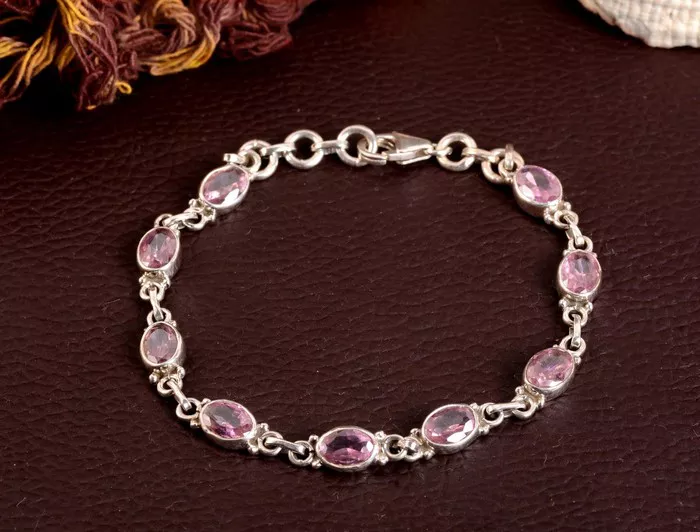Diamond bracelets, renowned for their exquisite beauty and timeless allure, are not only treasured for their aesthetic appeal but also hold significant value in the realm of economics and investment. Understanding whether diamond bracelets exhibit elastic or inelastic characteristics is crucial for both consumers and industry professionals alike. This article explores the concept of elasticity in relation to diamond bracelets, examining factors that influence their pricing, demand dynamics, market behavior, and the broader economic implications within the jewelry industry.
Understanding Elasticity in Economics
Elasticity, in economic terms, refers to the responsiveness of quantity demanded or supplied to changes in price or other factors. It measures how sensitive consumers or producers are to changes in these variables. The concept of elasticity is crucial in determining market behavior, pricing strategies, and understanding consumer preferences.
Price Elasticity of Demand: This measures the responsiveness of quantity demanded to changes in price. If demand is elastic, a small change in price leads to a proportionately larger change in quantity demanded. Inelastic demand means that changes in price have a relatively small impact on quantity demanded.
Price Elasticity of Supply: This measures the responsiveness of quantity supplied to changes in price. Elastic supply means that producers can quickly adjust output in response to price changes. Inelastic supply indicates that producers are less responsive to price changes.
Factors Influencing Diamond Bracelet Elasticity
Several factors influence whether diamond bracelets exhibit elastic or inelastic characteristics:
1. Price Range and Consumer Preferences
High-End Market: Diamond bracelets in the high-end luxury segment are often considered more price inelastic. Consumers in this market segment are less sensitive to price changes due to their higher disposable incomes and the perceived exclusivity and prestige associated with luxury jewelry.
Mid-Range Market: In the mid-range market, diamond bracelets may exhibit more elastic demand. Consumers in this segment are more price-sensitive and may consider alternatives or postpone purchases if prices increase significantly.
2. Availability of Substitutes
Natural Diamonds vs. Lab-Grown Diamonds: The availability of lab-grown diamonds as substitutes for natural diamonds can influence elasticity. Lab-grown diamonds often offer a lower price point with comparable quality, making them a viable alternative for price-conscious consumers.
Other Gemstones and Materials: Diamond bracelets compete with other types of jewelry and accessories, such as bracelets featuring colored gemstones, pearls, or metals like gold and platinum. The availability and popularity of these substitutes can affect the elasticity of diamond bracelets.
See Also: Loose Bracelet vs. Tight Bracelet: What Is the Difference?
3. Perceived Value and Brand Reputation
Brand Loyalty: Established jewelry brands with a strong reputation for quality and craftsmanship may experience more inelastic demand. Consumers are willing to pay a premium for brands that they trust and perceive as offering superior value and prestige.
Perceived Investment Value: Some consumers view diamond bracelets as investments or heirlooms, influencing their willingness to pay higher prices. This perception can contribute to inelastic demand, particularly among collectors and investors.
4. Market Trends and Fashion Cycles
Trends and Fashion: Changes in fashion trends, celebrity endorsements, and cultural influences can impact the demand for diamond bracelets. Bracelet styles that align with current trends may experience higher elasticity as demand fluctuates with changing preferences.
Seasonal Variations: Demand for diamond bracelets may vary seasonally, such as during wedding seasons or holidays. These fluctuations in demand can affect price sensitivity among consumers.
Pricing Strategies and Elasticity
Understanding the elasticity of diamond bracelets is crucial for jewelry retailers and manufacturers when devising pricing strategies:
Price Sensitivity Analysis: Jewelers analyze customer segments to identify price-sensitive vs. price-insensitive consumers. This helps in setting appropriate pricing strategies to maximize sales and profitability.
Promotional Strategies: Discounts, sales events, and promotional offers can influence consumer behavior and elasticity. Price promotions may attract more price-sensitive consumers while maintaining margins through volume sales.
Pricing Adjustments: Responding to changes in market conditions, such as fluctuations in diamond prices or shifts in consumer preferences, requires flexibility in pricing strategies. Elasticity insights guide timely adjustments to maintain competitiveness.
Economic Implications in the Jewelry Industry
The elasticity of diamond bracelets has broader economic implications for the jewelry industry:
Market Stability: Understanding demand elasticity helps in predicting market reactions to price changes, thereby contributing to market stability and reducing price volatility.
Industry Trends: Elasticity insights inform industry trends, such as the growing demand for sustainable and ethically sourced diamonds, influencing production practices and consumer preferences.
Investment Considerations: Investors in the diamond industry consider elasticity when assessing market risks and opportunities. Elastic demand may indicate higher market volatility compared to inelastic demand.
Conclusion
In conclusion, determining whether diamond bracelets are elastic or inelastic depends on various factors, including consumer preferences, price sensitivity, market dynamics, and industry trends. While high-end luxury diamond bracelets may exhibit more inelastic demand due to their exclusivity and prestige, mid-range bracelets may experience greater elasticity as consumers weigh alternatives and price considerations.
The concept of elasticity in economics provides valuable insights into how changes in price and market conditions influence consumer behavior and industry dynamics. Jewelers and industry professionals leverage elasticity analysis to formulate effective pricing strategies, manage inventory, and meet consumer expectations in a competitive marketplace.
As the jewelry industry evolves, understanding the elasticity of diamond bracelets remains essential for adapting to changing consumer preferences, maintaining profitability, and sustaining growth in a dynamic global market. Whether as symbols of love and luxury or investments in beauty and craftsmanship, diamond bracelets continue to captivate with their timeless allure and enduring appeal across generations.

